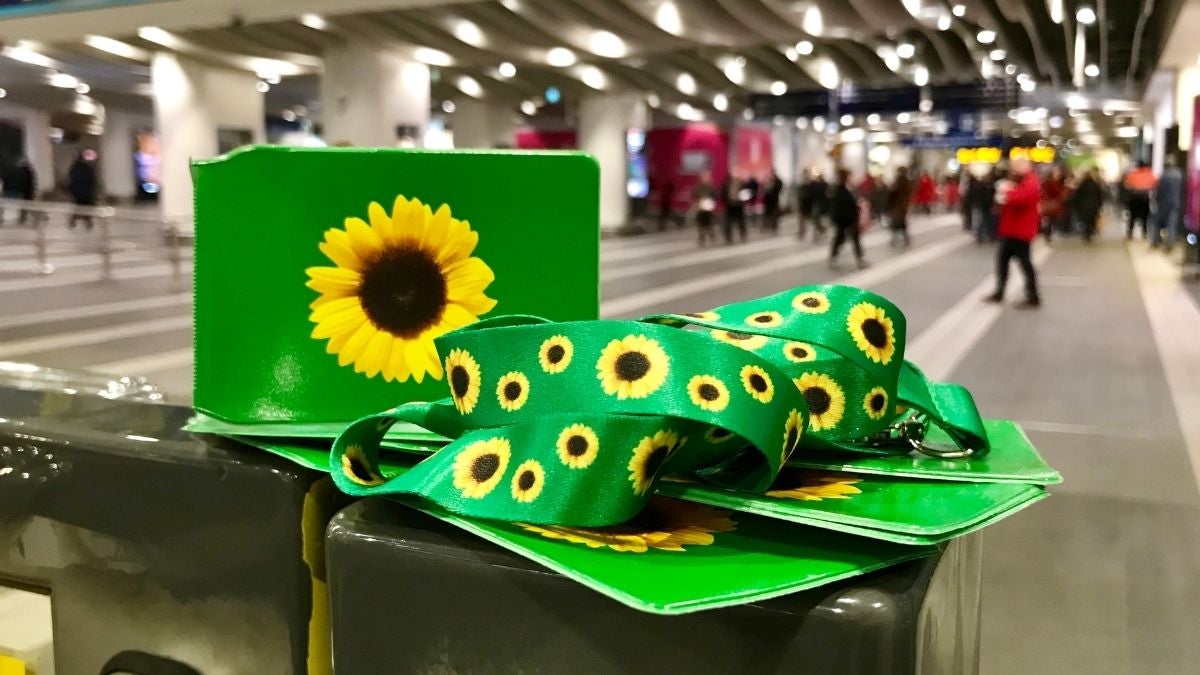
Of the 14.1 million people in the UK with a disability, 80% have hidden impairments, according to Purple, the charity behind Purple Tuesday, which takes places today (2 November). While efforts from businesses to improve inclusion often focus on the challenges faced by those with physical disabilities, there is now a recognition that more needs to be done for those with non-visible disabilities.
The charity estimates that businesses lose £2bn every month because they ignore the needs of disabled people. For Marks & Spencer’s inclusion and diversity director Cleo Thompson this is partly because the issue of disability has been “overlooked” by businesses.
“Until relatively recently disability was really overlooked as part of the inclusion and diversity agenda. While the focus has been on other areas such as gender, race and ethnicity, which are really important, I do feel that disability hasn’t really had a place at the table,” she said, speaking during a Microsoft-hosted panel event held this morning that featured a number of the government’s disability and access ambassadors.
One of reasons for this is a sense of exclusion felt by those with disabilities, which means they are less likely to come forward with the issues they face. Microsoft accessibility product marketing manager Michael Vermeersch, speaking at the same event, claimed that only one in 10 people with disabilities complain because they are “so used to hitting barriers and being ignored”.
This problem is especially pertinent for those with hidden disabilities, which range from mental health issues, to hearing impairments and chronic illnesses.
Until relatively recently disability was really overlooked as part of the inclusion and diversity agenda
Network Rail access and inclusion manager Caroline Eglinton has experienced many of these problems first hand. As someone with two non-visible conditions – cystic fibrosis and ADHD – she was often reluctant to complain to rail companies because the systemic nature of the issue meant it didn’t feel worthwhile.
Eglinton said: “There are still people who think that those using the passenger assistance service on their journeys aren’t disabled if it isn’t visible. For me coming into this role, it was important to educate people that accessibility doesn’t stop with step-free access to trains.”
The rail industry has recently completed a disability equality training programme for 30,000 staff members. Eglinton believes this will give the industry the same level of “awareness and understanding” to better assist all disabled customers.
Helping those with non-visible disabilities
Although improvements to accessibility for those with physical impairments are important, many companies are realising they have overlooked some of the challenges faced by those with other forms of disabilities. Barclays head of customer and client accessibility Kathryn Townsend said: “We have some catching up to do to make sure that the accessibility of our other channels meets the high degrees of physical accessibility in our branches.”
One area where Thompson thinks the retail sector can improve is seeing disability as more than just an access issue. “Only 8% of the people with a disability use a wheelchair,” Thompson said. “Yet we often only think about that as an aspect of improving accessibility when it’s so much more. It’s the experience you have when you’re shopping, on the train or at the bank, or the visual experience when you’re online.”
One way the sector has sought to address this issue is through the sunflower lanyard scheme. First introduced by staff at Gatwick Airport, the specially-designed lanyards are used to help raise awareness of people with hidden disabilities. It is generally worn by customers to indicate they may need extra assistance or patience when shopping, with the scheme now available in many stores, supermarkets and on public transport.
The number of people wearing these lanyards has grown during the pandemic as people with non-visible conditions used it to request social distancing because of their vulnerability to the virus or explain why they were exempt from wearing a face covering.
Thompson said: “The use of the sunflower lanyard to flag the awareness of non-visible disability is a really useful marker. We encourage our staff to wear them and lots of other retailers and customers are now doing the same.”
She claimed the symbol is a good example of a “light touch, high impact” policy in terms of its capacity to improve awareness across the retail sector. Thompson added: “A lot of organisations are starting to build inclusivity for disabled shoppers into not only the products that they sell, but also the retail environments in which they’re sold. This means they are of greater appeal to a broader range of people.”

Of the 14.1 million people in the UK with a disability, 80% have hidden impairments, according to Purple, the charity behind Purple Tuesday, which takes places today (2 November). While efforts from businesses to improve inclusion often focus on the challenges faced by those with physical disabilities, there is now a recognition that more needs to be done for those with non-visible disabilities.
The charity estimates that businesses lose £2bn every month because they ignore the needs of disabled people. For Marks & Spencer's inclusion and diversity director Cleo Thompson this is partly because the issue of disability has been "overlooked" by businesses.
"Until relatively recently disability was really overlooked as part of the inclusion and diversity agenda. While the focus has been on other areas such as gender, race and ethnicity, which are really important, I do feel that disability hasn't really had a place at the table," she said, speaking during a Microsoft-hosted panel event held this morning that featured a number of the government's disability and access ambassadors.
